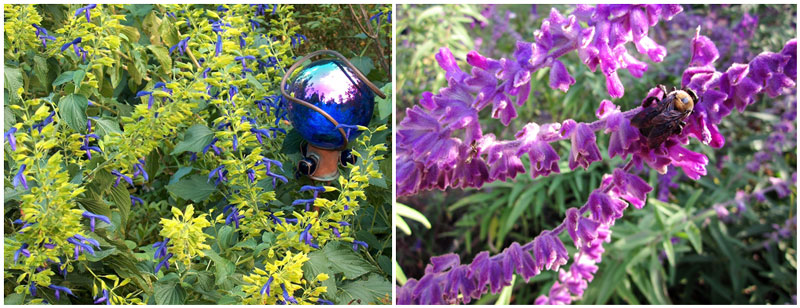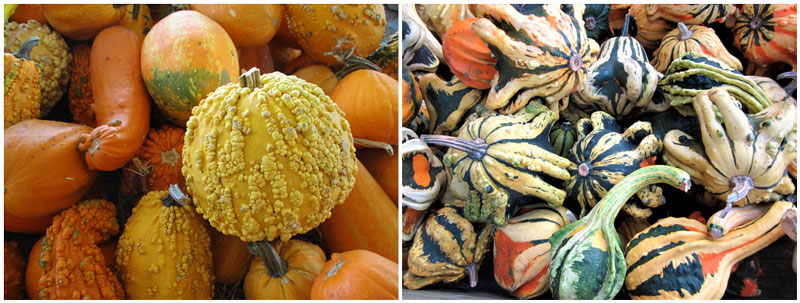Fall – East Texas Style – Diane Morey Sitton
Fall is my favorite season—always has been, always will be. The change in the air, the slant of the sun, the bold colors that overtake gardens, and even the not-so-scary scarecrows that traditionally appear draw me in like a magnet. And, here, in the piney woods of Southeast Texas, expressions of the season are as plentiful as tall tales and ten gallon hats.
For starters, what we lack in colorful fall foliage we make up for with fall flowers. Look around. Gardens overflow with the lavender and white bracts of Salvia leucantha and the gloriously gaudy chartreuse and purple bloom spikes of Mexican sage. Two of fall’s golden girls, cassia and esperanza, dress for the season in clusters of yellow flowers, as bright as sunshine itself. As if that’s not enough, Mexican petunia, rock rose, ornamental grasses, ornamental peppers, and other plants beautify beds, borders, pots, and planters.
Not to be outdone, fall flowering vines cover fences, arbors and trellises. Cypress vine covers everything in its path with fern-like foliage, and then sets it ablaze with red star-shaped flowers. Hyacinth bean vine, a pink-flowering, multi-season sensation, finishes up the year with magenta, lima-bean-shaped seed pods.

If it’s butterflies you want, they are plentiful. But don’t be fooled. The bright green “butterflies” you see amidst the yellow blooms on butterfly vine are papery, butterfly-shaped seed pods. By late fall they turn reddish brown and are ready for crafters and bouquet makers to pick.
Wildflowers, too, color the season. You can’t miss goldenrod, a flamboyant yellow bloomer. Like common sunflower, it flourishes in fields and anyplace else where it can sink its Texas-lovin’ roots. Texas sage is another prolific roadside wildflower. It lives up to its common name Indian fire for its bright red, trumpet-shaped blooms. Jewelweed and horsemint are prominent, as well.
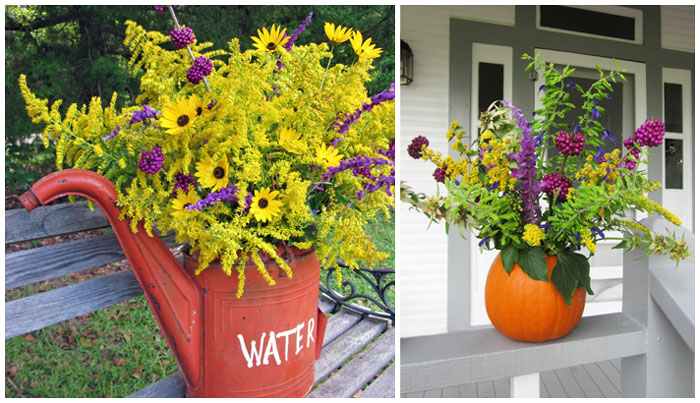
But flowers are only part of the celebration. At farmers markets, pumpkin patches, and local nurseries pumpkins fill shelves, overflow from boxes, and spill from carts and wagons. Colors range from ghostly white to ghoulish blue. Textures are as smooth as witches’ brew and as warty as gremlins on fruits as round as harvest moons and as ribbed as skeletons.
Intent on creating porch displays, shoppers know that the seasonal offerings don’t stop with pumpkins. Mums that are shaped in mounds as big as kids’ craving for candy compete with the pumpkins in shades of red, yellow, lavender, and white. Indian corn, various squash, gourds, and dried sunflower seedheads are plentiful, too.
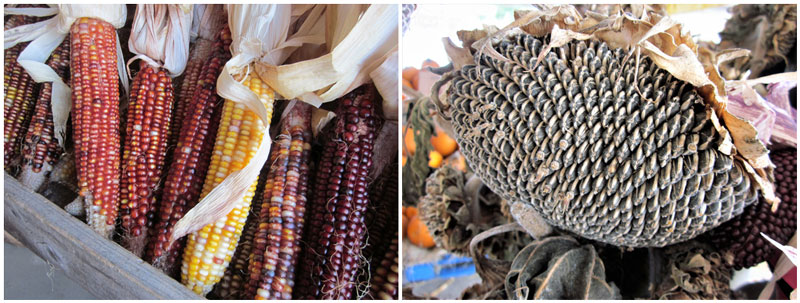
But the obsession with the season doesn’t end there. In rural East Texas fall means cranking up the tractor, spearing a large round hay bale, and moving it to the front gate or front pasture to be spray-painted orange and decorated like a jack-o`-lantern. For country folks, tractors themselves, especially vintage models, are the mainstays of roadside sensations. Usually, they are parked near front gates with scarecrows in the seats and pumpkins on the hoods. Likewise, the season brings out restored buckboards filled with pumpkins and mums.
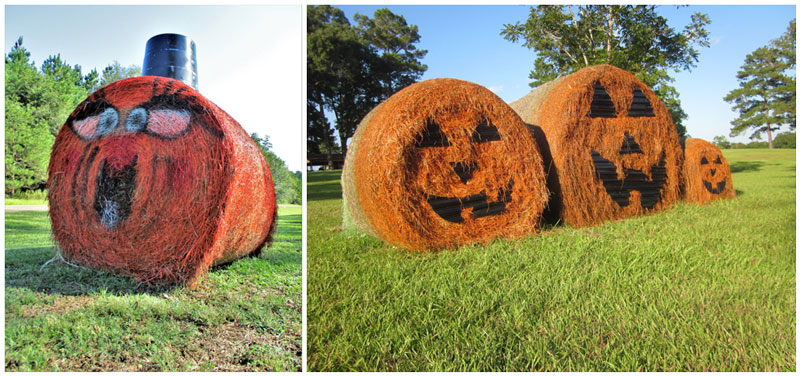

Yes, fall is in the air, and in East Texas flowers blanket gardens and fields, pumpkins decorate porches, scarecrows populate sidewalks and entrances, and painted hay bales charm drivers on country roads.
In these parts, it’s our way of saying “Happy fall, y’all.”


